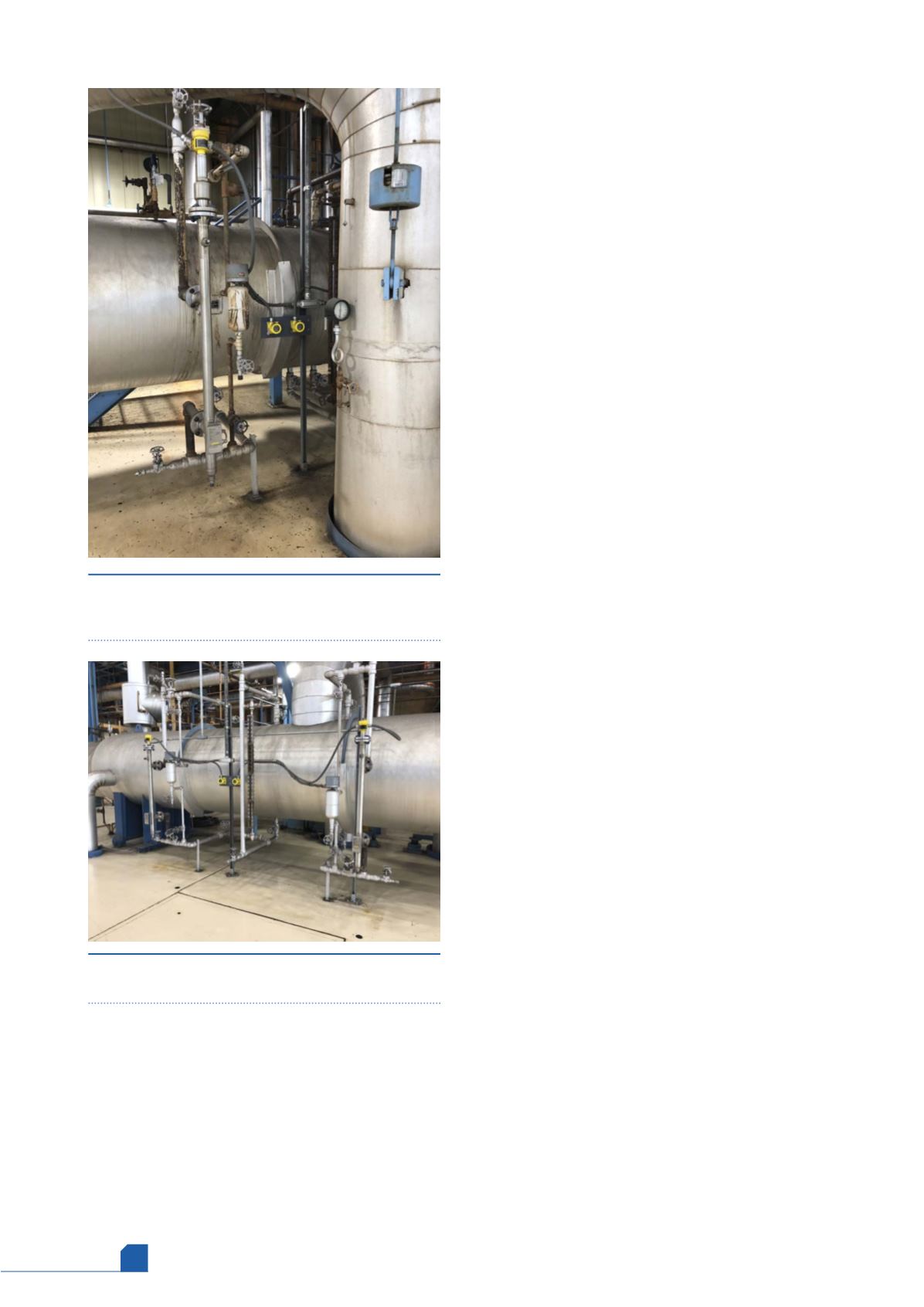
July
2020
HYDROCARBON
ENGINEERING
52
Understanding steam boiler drums
Steam boilers use heat and pressure to turn water into steam,
which is then transported through pipes to the equipment
that is being heated. To conserve water and energy, steam
boilers are often used in a series with incrementally increased
pressures and temperatures at each stage.
The conditions inside steam boilers are extremely hot and
highly pressurised to create saturated steam. Simply specifying
a BPVC-approved level measurement sensor without fully
understanding the instrument’s operating principle will lead to
less than optimal control at best, and unsafe operation at
worst.
As water vaporises and changes from steam to saturated
steam, its density changes, which leads to challenges for level
measurement technologies such as differential pressure, which
rely on a constant density to provide an accurate
measurement. Additionally, level measurement technologies
such as guided wave radar experience slower pulse velocities
moving through saturated steam, which can also lead to errors
and unreliable measurements. The challenge is finding a
solution that works using the available technology.
Differential pressure transmitters: the
old standard
Differential pressure transmitters use a dual sided diaphragm
that senses pressure from the bottom of the vessel on one
side and from the top of the vessel on the other. These
opposing pressure measurements push on opposite sides of
the dual sided diaphragm, and the resultant measurement is
the pressure difference, or differential pressure.
The differential pressure measurement can then be used
to calculate a level using the hydrostatic pressure formula,
which consists of three variables: pressure, density, and height.
The sensor measures pressure, density is input as a constant by
the user, and the height is the level. The hydrostatic equation
is as follows:
P = p
•
g
•
h
Where:
P = pressure.
p = density.
g = gravity.
h = height (level).
Accurate level measurements using differential pressure
are dependent on a consistent density. However, when it
comes to steam boilers, a consistent density is rarely the case.
During startup and shutdown, the air space in the vessel
undergoes a significant density change as temperatures rise to
upwards of 600°F, pressures reach 1500 psi, and steam
becomes saturated steam.
As the air space goes from containing steam to saturated
steam, its density can change by as much as 50%. This drastic
change then translates to a level measurement error by nearly
the same amount, assuming the differential pressure sensor is
calibrated while the process is not running.
Operators who understand this concept often
compensate by calibrating the differential pressure sensor at a
specific operating condition. This practice greatly improves
performance at that specific operating condition, but it still
does not eliminate measurement errors when the process
fluctuates away from this stage of the operation.
Differential pressure sensors can also output measurement
errors when the sensors’ capillaries are exposed to
temperature swings over the course of a day. The fluid in these
lines will expand or contract with temperature changes, which
causes the pressure transmitter to output a slight change in
level. This is a common issue with all differential pressure
measurements, and it is not exclusive to steam boiler drums.
Figure 1.
A VEGAFLEX 86 guided wave radar monitors
the overall level in a steam boiler drum side chamber
with a remote display for easy visualisation.
Figure 2.
Two guided wave radars provide redundant
level measurements for additional safety.








